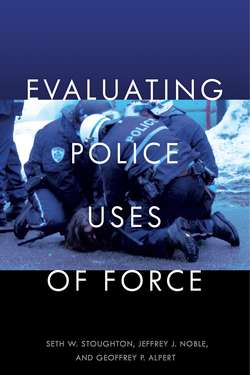Читать книгу Evaluating Police Uses of Force - Seth W. Stoughton - Страница 27
На сайте Литреса книга снята с продажи.
Proportionality
ОглавлениеOnce a legitimate state interest has been identified, the next step of the inquiry is to determine whether the type and amount of force used was proportional to the apparent threat to the governmental interest. That is, after concluding that the subject’s actions presented a threat to a governmental interest that justified some use of force, reviewers must determine whether the threat to the governmental interest justified the force that officers actually used. As the Supreme Court stated in Graham v. Connor, “Determining whether the force used to effect a particular seizure is ‘reasonable’ under the Fourth Amendment requires a careful balancing of the nature and quality of the intrusion on the individual’s Fourth Amendment interests against the countervailing governmental interests at stake.”63
This is the heart of analyzing any use-of-force incident: were the officer’s actions appropriate to the situation? This analysis must be conducted while keeping the responsibilities of the officer in mind; officers are charged with enforcing governmental interests, as identified above, but they are also called upon to protect civilians from unnecessary indignity and harm.
It is also important to emphasize at the outset that uses of force are not single-event incidents. In every interaction that involves a use of force, officers will make a number of choices and take a number of actions, including potentially using force multiple times. Each decision point and each use of force must be analyzed to determine whether it was reasonable in light of the information available to the officer at the time, including the decision points that preceded the initiation of violence by either the officer or the subject.
Figure 1.1. Simplified Spectrum of Reasonableness
When determining whether an officer’s use of force was proportional to the perceived threat, it is essential to keep in mind that the concept of reasonableness exists on a spectrum. Theoretically, at least, one end of that spectrum reflects uses of force that are unreasonable because they are inadequate to protect the governmental interest at stake: for example, an officer who verbally threatens to pepper spray someone who is actively shooting at the time, but takes no other action. That is highly unlikely to violate the constitutional standard—the Fourth Amendment protects individuals from having force used against them; it does not guarantee that a certain amount of force will be used—but the unreasonableness of the response is certainly relevant to fully evaluating a use-of-force incident.
More pragmatically, the other end of the spectrum reflects uses of force that are unreasonable because they are excessive: for example, an officer who shoots a passive protestor who refuses to stand up when ordered. Between those two extremes are uses of force that, in light of all the facts and circumstances, are proportional to the threat. This simplified spectrum is depicted in Figure 1.1.
The proportionality of a use of force presents a Goldilocks problem: reviewers must determine whether, in any given incident, officers used too little force, too much force, or just the right amount of force. Unfortunately, that analysis is easier to describe in the abstract than to apply to real-world incidents. Even when investigators have a firm factual understanding of an incident, it may be difficult to identify where a particular action falls on the spectrum. Not all incidents are difficult to assess, of course. Some incidents involve force that is clearly inadequate, clearly reasonable, or clearly excessive. But many other incidents will fall close to the line between inadequate and reasonable or reasonable and excessive, and those lines are impossible to draw in advance with complete clarity. Instead, they exist as grey areas, zones of uncertainty that require thorough investigation to resolve, to the extent that they can be clearly resolved at all. This analytical spectrum of reasonableness is depicted in Figure 1.2.
Figure 1.2. Analytical Spectrum of Reasonableness
Exactly where a particular use of force falls will, of course, depend on the facts of the specific case. Reviewers are cautioned to avoid putting any weight on their initial impressions of an incident; preliminary information is almost always incomplete and is often simply wrong. Reliable determinations require thorough investigation and competent analysis.
Reviewers are also cautioned to avoid adopting an artificially narrow definition of reasonableness. For the constitutional analysis of any given use-of-force incident, the question is not whether the officer’s choices and actions were the only reasonable options. Although there may be exceptions in unusual circumstances, there are typically some number of reasonable tactics and force options in any given situation. The question for reviewers is whether the officer’s actual use of force is included in the array of options that fall within the “reasonable” portion of the spectrum.
In similar situations, then, it may be reasonable for different officers to use different force options. Officers should use only the amount of force necessary to address a threat to a governmental interest; however, so long as the force option they choose falls within the zone of reasonableness, they are not constitutionally required to use the least amount of force possible. Situation permitting, of course, officers should consider the available options, if any, and reviewers should take into account the clear availability of less intrusive alternatives that seem reasonably likely to address the threat when determining whether an officer’s choice fell within the zone of reasonableness.64
In this section, we provide a detailed overview of the Graham factors and additional considerations that can affect the determination of whether a use of force was proportional to the apparent threat to the governmental interest.
